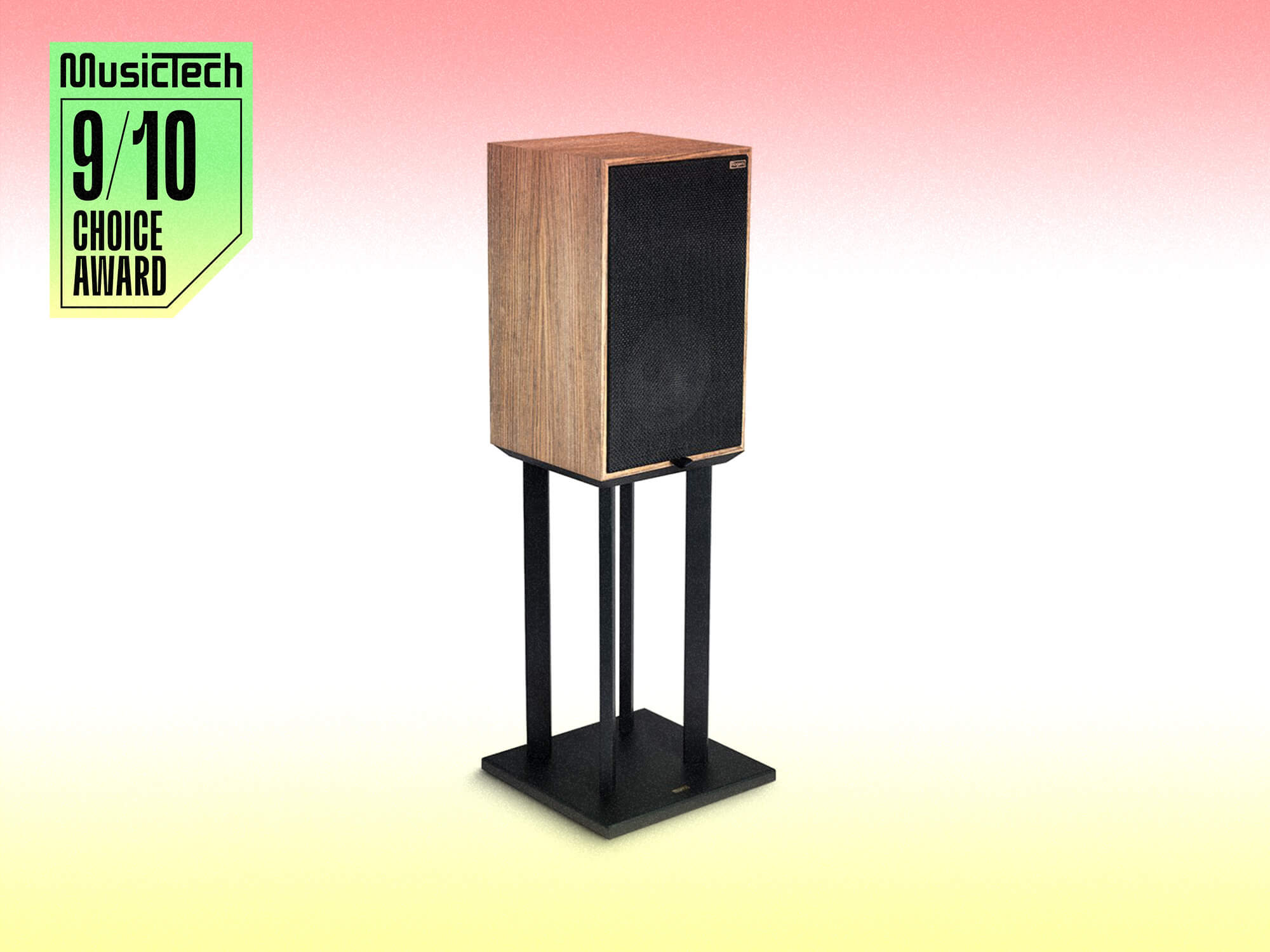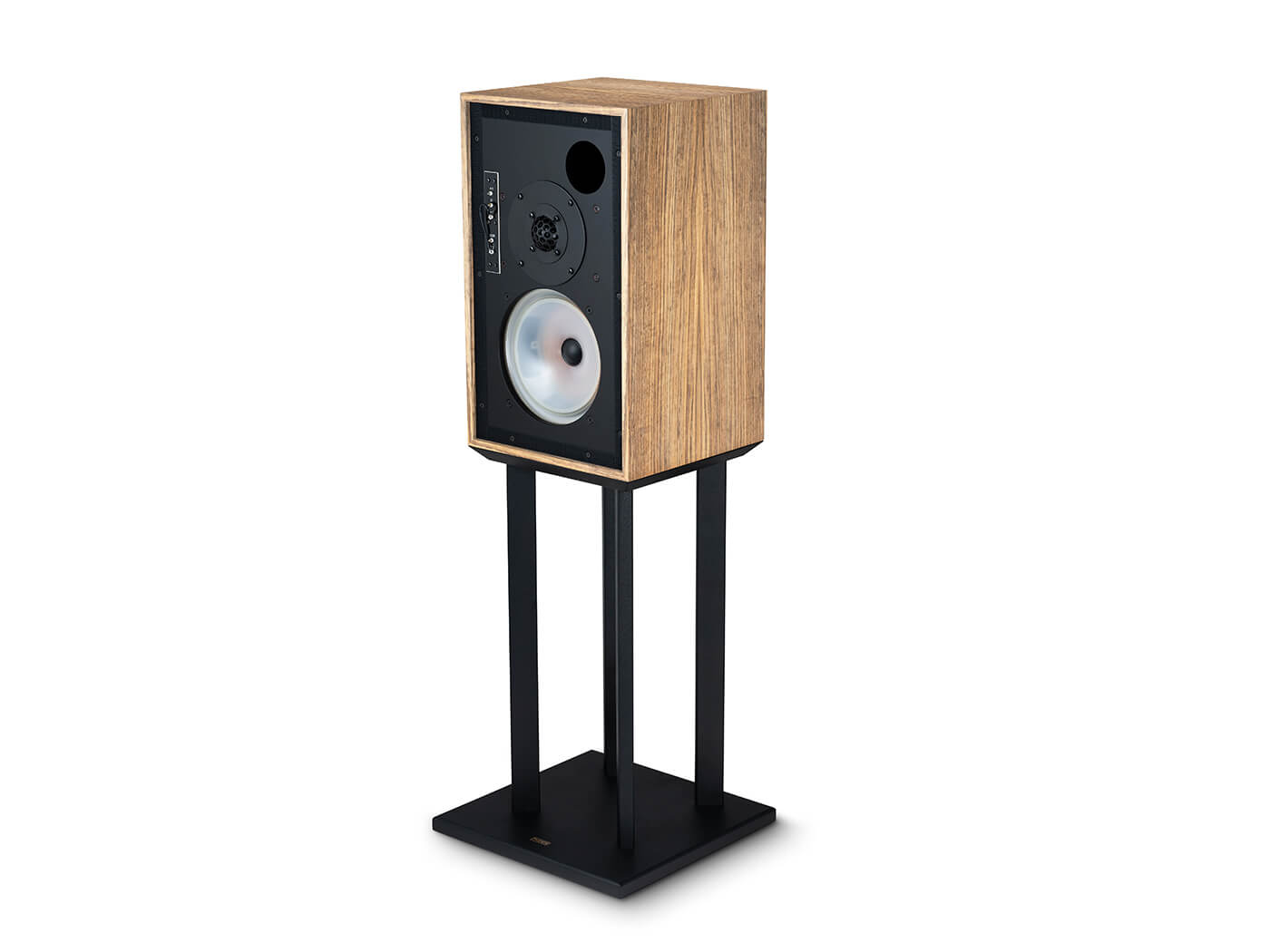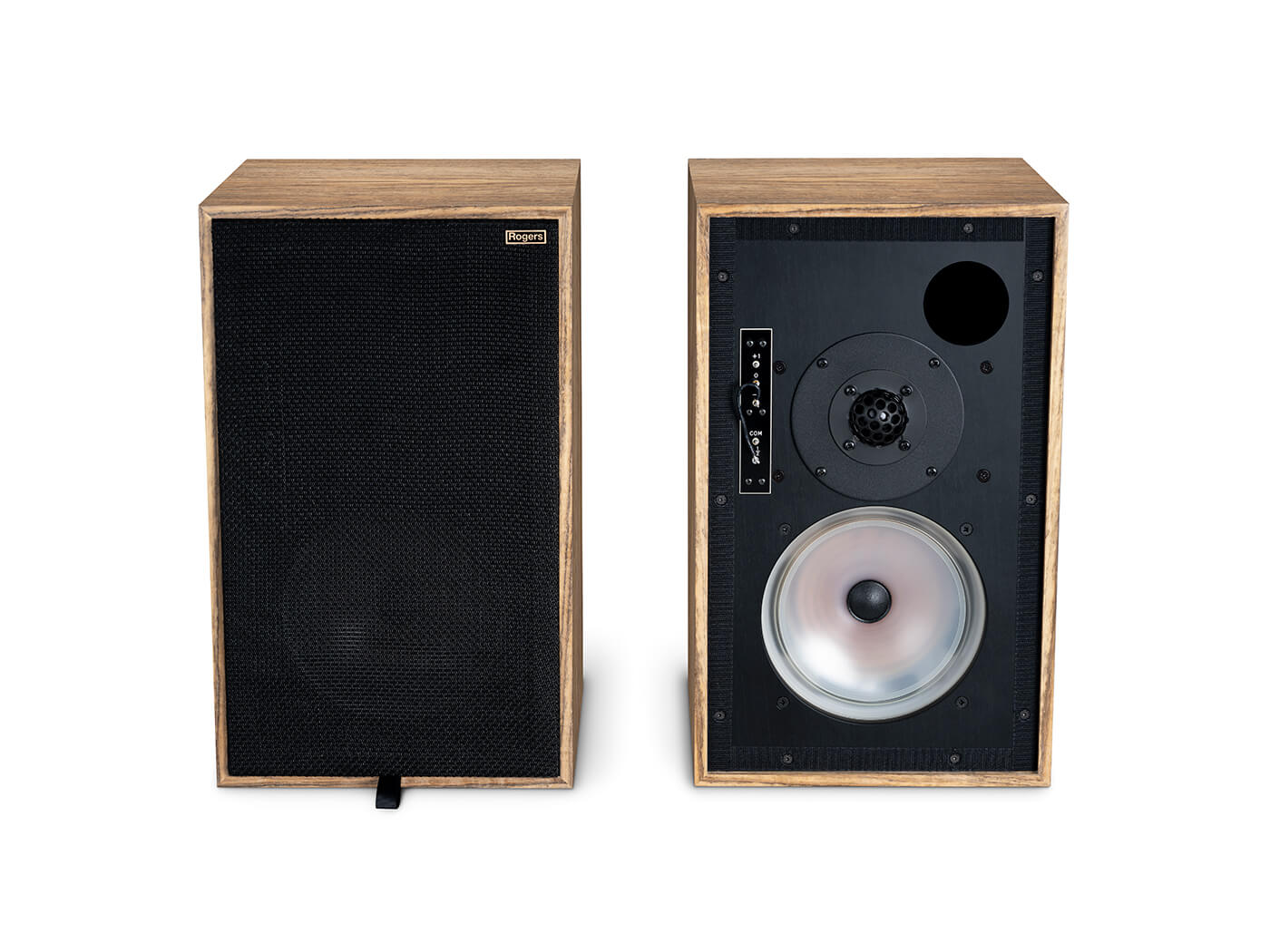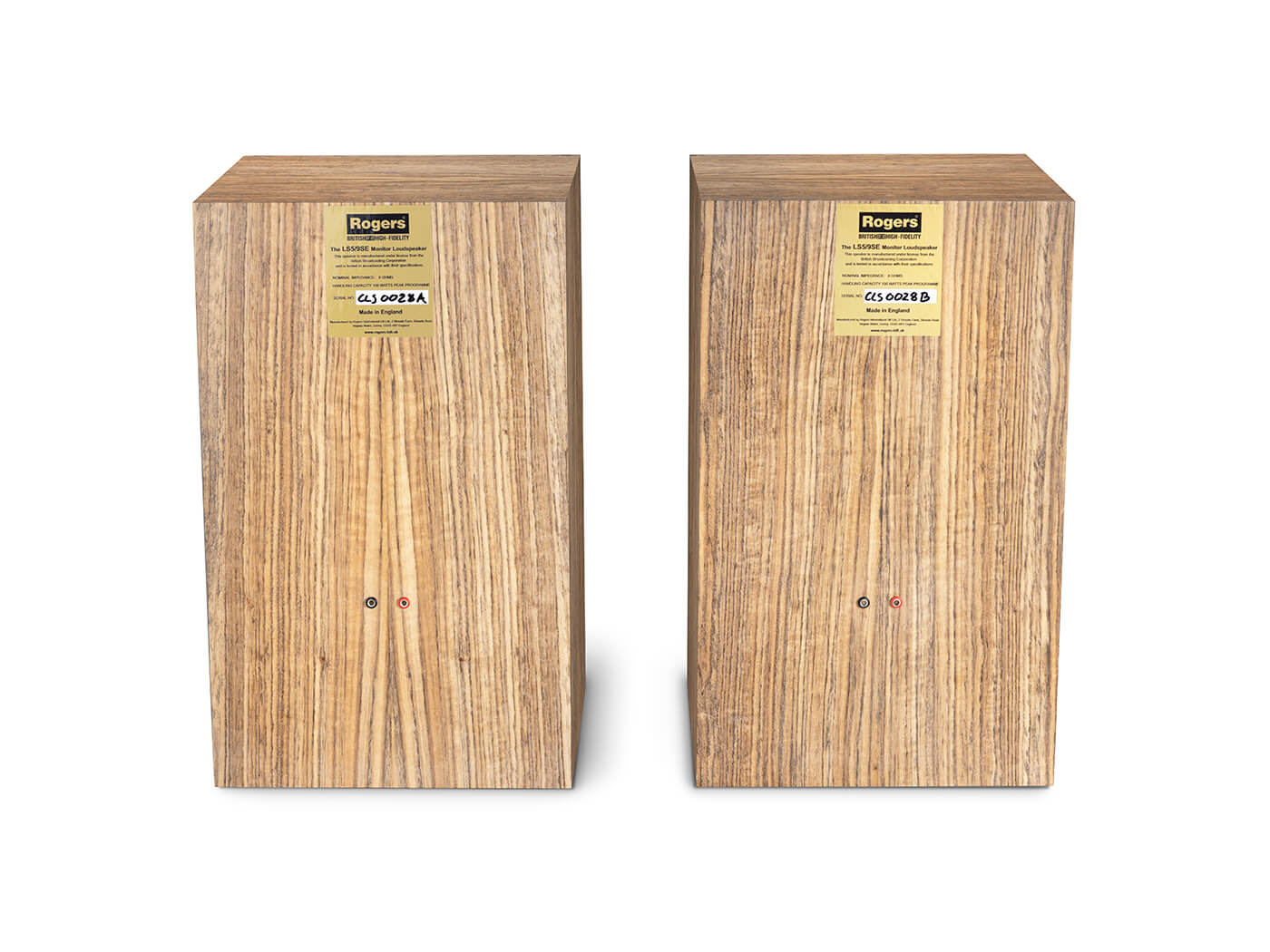Review: Rogers LS/59 Classic SE
Promising pristine, broadcast-quality audio, these retro-tinged speakers are based on a classic passive monitor design from the BBC.

Review Overview
Our rating
9
Our verdict
⊕ Smooth, un-hyped treble
⊕ Agile and tuneful bass
⊕ Deep, hear-through soundstage
⊕ Beautifully finished
⊖ Power amplifier required
⊖ No user-adjustable controls
Classic broadcast quality monitors offering refined, uncoloured sound without artifice. Ideal for monitoring at sensible SPLs but not suitable for room-shaking noise merchants.
Price £5,499
Contact Rogers
Studio monitors come in many guises, and these days the vast majority are active designs, powered by their own bespoke amplifiers. It wasn’t always the case, though, and the LS5/9 Classic SE from the newly relaunched Rogers brand is an old-school two-way passive monitor that improves over the original 1980s design and offers an alternative to the current style of all-in-one studio monitor.
- READ MORE: Review: Algonaut Atlas 2
The British Broadcasting Corporation designed the legendary LS series of monitors to meet their extremely high standards for broadcasting purposes, focusing on reproducing as naturally as possible the sound of acoustic instruments and voices. As the BBC was not in the manufacturing business, they licensed their designs to manufacturers such as Rogers, who built them under the Corporation’s rigorous quality control. Though Rogers were out of business for many years, former Rogers Technical Director Andy Whittle has now relaunched this illustrious brand.
Technical prowess
Each wooden cabinet measures 460mm x 275mm x 285mm and houses a bespoke 210mm polypropylene mid/bass driver with vinyl surround, beneath the classic Audax 34mm tweeter. These drivers crossover at a reasonably high 3kHz, and power handling is rated at 100 watts unclipped, with maximum SPL quoted as 106 dBA. The cabinet itself is a thin-wall construction, typical of BBC designs that it recreates, and the front baffle is covered with a cloth grille made from heavyweight, woven black nylon (Tygan). Integral to the monitors’ performance, the grille should be left in place. They are attached with Velcro and are difficult to prise off, so try it once, if you must, to check out the drivers and factory-set tweeter adjustment panel, then reattach and leave firmly in place.

It’s rare these days for any loudspeaker to be used with grilles attached, and most that come with them are better without, but the LS5/9 is an exacting design without room for tweaking, which is why there are no user-adjustment controls. Some might lament the absence of filters and room boundary controls found on many active designs. However, these passive monitors are voiced to sound correct in a decent-sounding room, fed with a good-quality power amplifier.
For best results, they need to be placed on sturdy stands (bespoke stands are available from Rogers) and not spread too far apart. The equilateral triangle is key here with listening position – and having them firing almost straight ahead. This allows for more expressive imaging, in terms of both depth and width, than having them widely spaced and toed-in to the sweet spot.

Bulletproof build
There are two models available: the original spec LS5/9, which costs less, and the latest Special Edition, on test here. Andy has pulled out all the stops to offer the ultimate performance from the historic design with the Special Edition. One of the key improvements of the SE is the use of Panzaholz, a high-tech natural wood product known for its extremely high density and strength; It’s so robust that it is, in fact, bulletproof. More importantly, its rigidity is key to the sonic performance of the monitor.
“For the 5/9 SE, you get the Panzaholz front baffle which digs out more detail and spatial cues whilst cleaning up the bass, again sounding more natural and open, against the standard 5/9, which isn’t too shabby in the first place!” Andy Whittle told us, “Also, for the 5/9 SE, we upgrade the ferrite cores to dust iron. The dust iron sounds much more natural than ferrite, and then we wax dip them to prevent the coils vibrating when under load… again, this brings a sense of focus and order to the speaker that you don’t normally experience.”
Back in 2014, we reviewed a version of the LS5/9 manufactured by Graham Audio (still available today), which were superb. I also worked through a tatty but great-sounding pair during time spent working for the BBC, so it’s with enormous anticipation we swap out our beloved 1987-vintage Rogers LS3/5a (the present monitor’s smaller stablemate) for this Special Edition.

Sound presentation
First impressions? Startling clarity with faultless reproduction of timbre, allied to a spacious soundstage. Reproduction of voices is completely convincing, as is the natural sound of pianos, acoustic guitars and other acoustic instruments. Listening to the familiar recording of Nick Drake’s Pink Moon is a spine chilling experience – like he’s right there, in the room.
In contrast to hi-fi speakers, which tend to gild the lily, studio monitors are supposed to be accurate. Yet, we hesitate to use that word here even though the LS5/9 SE more accurately reproduces audio than most. That’s because ‘accurate’ has become a byword for the modern presentation of stark detail retrieval and dry, iron-grip-like bass control. This monitoring style works well for highly processed pop productions and electronica but is less convincing with more organic material.
That’s not to say the 5/9s lack detail and punch, or they can’t rock out when required. Instead, their presentation is effortless, free-flowing and captivating. Music is unforced; they don’t shout and simply let you hear your recordings with outstanding tonal coherence. Neither do they pull apart your mixes like so many so-called ‘accurate’ monitors do. They rather give you the complete picture with all ambient cues intact and each element of the recording easily defined. Low-end performance is first-class, with none of the thump and boom that plagues some mid-sized monitors trying to sound bigger than their dimensions. Further up the frequency spectrum, the absence of glare or hyped treble allows for lengthy mixing sessions without fatigue.
Dynamic expression is also top-drawer, which adds to the sense of transparency and supreme resolution. The original spec LS5/9 – along with its smaller and larger LS-series BBC monitors – was always the last word in faithful audio reproduction, offering electrostatic-like performance in situations where large panel speakers were impractical. The new SE version presents unparalleled performance within its size limitations, offering a welcome alternative to the muscle-bound, overtly explicit style of modern monitoring.
Key Features
- BBC-licensed
- Bespoke mid/bass driver
- Audax tweeter
- Two-way bass reflex design
- Panzerholz front baffle
- Tygan grille
- Maximum SPL 106 dBA
- Dimensions 460mm x 275mm x 285mm (hwd)
- Weight 12Kg